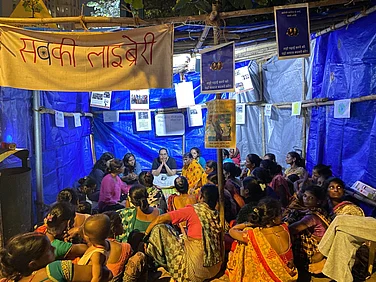Remember when wide-leg jeans replaced the skinny jeans trend and all you could find in stores were different styles of wide-leg jeans? Everyone from celebrities like Katrina Kaif to influencers like Komal Pandey suddenly started wearing the same type of jeans. And how pastel colours suddenly became prominent in every store? This is the result of trends created by high retail fashion stores or celebrities which are followed by mostly young people around the world.
You see Kylie Jenner wearing a pink cut-out dress on her Instagram post from a designer and you will see some companies like misguided or fashion nova selling a knock-off version of that same dress in their stores two days later. This is called fast fashion.
Students or young people whom we call Gen Z are the most common target market for these brands — mostly because they are the ones the brands can easily reach because of their social media presence. Social Media is the place where trends are created in this era, and Gen Zs are usually the ones following those trends are for, be it soft girl fashion, gothic fashion, cottage core, or Y2K.
Every week a new aesthetic is developed and is followed by young people globally. Brands like Zara or H&M closely monitor these trends and create pieces that are most popular. A celebrity or an influencer wears a particular kind of clothing and you can see the knock-offs of that piece in the market within a very short period of time. For instance, Anushka Sharma wore a very beautiful pastel pink lehenga by Sabyasachi on her wedding and you could find the replicas of the lehenga everywhere in the Indian market within days.
Young people see their favourite influencer wearing a designer dress from a high-end brand and the replicas of that same dress are created within days and are sold on their local markets or small retail stores at minimal price. Some of the most popular fashion retailers, like Zara, H&M, and Urbanic produce a piece of clothing that is inspired by some big fashion brands with minor changes and sell them cheaply to the masses within a week.
Fast fashion means how quickly a piece of cloth is produced and reaches its consumers. This whole process of making new patterns of clothes frequently is heavily influenced by changing trends in the fashion industry. Fast fashion can be defined as ‘fast’ because the rate at which clothes are produced is fast — the availability of trendy clothes in the markets is fast, the rate at which the apparel reaches the customers is fast, and the span in which they end up in dump yards is fast. Fast fashion is a design, manufacturing, and marketing method focused on rapidly producing high volumes of clothing. It focuses on trend replication and low-quality materials in order to bring inexpensive styles to the target market.
Over a million tonnes of fabric waste is scrapped every year in India, making it the third largest source of municipal solid waste, according to industry estimates. Fast Fashion is the major contributor to the degradation of the environment over the years. Till the mid-20th century, the clothes were made according to only four seasons — fall, winter, spring and summer, but with the coming in of the industrial revolution, the large factories began to mass-produce textiles which resulted in these cheap trendy pieces. Brands nowadays have about 52 micro-seasons a year or a ‘new collection’ every other week.
The growth in the popularity of fast fashion is closely knitted with social media and celebrity/influencer culture. These brands tie up with influencers who have the audience that they want to cater to and that Influencer acts as the spokesperson for the brand and promotes their clothing. In fact, a recent survey found that almost 75 per cent of 18-24-year-olds believe influencers can be held somewhat accountable for the rise in disposable fashion.
Sania, a student of Jamia Millia Islamia and an influencer herself, also believes that.
Sania says, “Yes, I believe that we as influencers contribute to the fast fashion industry more, but, because of the changing trends on social media, there is constant pressure on influencers to provide their followers with fresh content and mostly those clothes are sent by the company.”
The cycle of fast fashion is not just created by consumer demand and the companies are to blame too. Sometimes, clothes are purposely marketed so much that an average person impulsively buys it. It is fed to the public via different ways. Social media’s algorithms are designed in such a way that a person is constantly pushed into purchasable content.
This cycle of following frequent trends affects the environment adversely each year. Every year, the sector requires 93 billion cubic metres of water, which is enough to meet the consumption needs of 5 million people and is responsible for around 20 per cent of industrial water pollution as a result of textile treatment and dyeing. There are also numerous problems with the materials and processes used. The carbon emissions are also estimated to increase by 50 per cent by 2030.





















